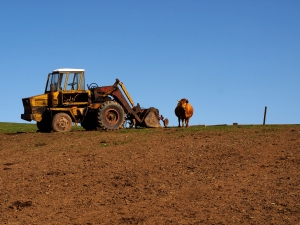Professor Iain Young from the University of New England, a member of the research team, explained that the presence of microbes and fungi in soil can transform a random structure of particles into a system that functions, in some respects, like a complex biological organism.
The experimental findings are published in the Journal of the Royal Society Interface (ranked as one of the world’s four leading multidisciplinary science journals). While the impact of microbes on soil structure is well known, this is the first study to show that soil structure, in its turn, affects microbial activity - thus completing the feedback loop necessary for a self-organising system.
And so, the authors say: "an understanding of how soil changes over time will only be achieved by studying the integrated behaviour of the biology and the physics".
Professor Young, Head of UNE’s School of Environmental and Rural Science, is a biophysicist whose career-long involvement in soil research has informed his understanding of soil as: "the most complex biomaterial on the planet".
"In a handful of fertile soil there are more individual organisms than the total number of human beings who have ever lived on Earth," he says.
"We know - we’ve counted them."
In explaining the organising impact of microbes and fungi on soil he likes to use a house-building analogy.
"They act as architects, builders, interior designers and plumbers," he says.
"They design the ‘house’, assemble it by extruding glue-like chemicals, arrange the furniture, and optimise plumbing and ventilation. Using a little feng shui, they create a structure that takes on a life of its own."
In a series of laboratory experiments using sophisticated x-ray technology to construct three-dimensional images of soil structure, the researchers were able to demonstrate that the presence of microbes and fungi is directly related to changes in the soil’s porosity that enhance the flow and storage of water and gases.
"Both the experimental and theoretical work presented here provide evidence that the soil-microbe system is self-organising as a consequence of the feedback between microbial activity and particle aggregation," they report.
"This feedback results in an increase in porosity at scales relevant to water storage and flow, and to gas diffusion.
"Given the importance of soil for carbon storage, it will be important to determine the impact of self-organising behaviour for carbon turnover."
Professor Young said that the main aim of the research, however, was to create "designer soils" that: "can store water in a way that will increase the value to agriculture of every millilitre of water used".
"We will be developing this work through the Cooperative Research Centre for Polymers to design soils for agriculture," he said.

